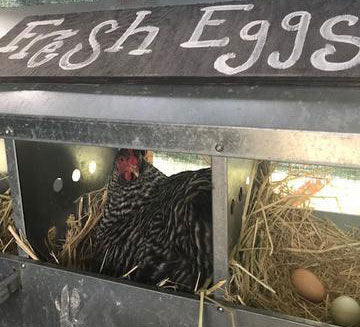
Hi Treats for Chickens community, it's me, Dawn!
Due to the increase of emails, I decided to start a Treats for Chickens Chicken Care 101 Series. This one is Types of Chicken Feed for Chicks to Laying Hens. If you missed the first post of this series: Difference Between Chicken Layer Feed + Chicken Scratch.
Holey moley, there’s so much to know about chicken feed it’ll make you scratch your head. (By the way, scratch and other treats should never make up more than 10% of your flocks’ diet.) Lucky for you, I went to work simplifying everything you need to know about the different types of chicken feed and what you should feed your precious egg laying hens and flock members.
Pour yourself a cold one, grab a cup of joe or chamomile tea if that's your thing - class is in session, now.
What should you choose for baby chicken feed?

A baby chicken {aka "chick"} has different nutritional needs than adult egg laying hens, so it makes sense that the type of food they eat should be different too!
Fun fact: A baby chick can live several days from eating the yolk of the egg from which they just hatched. This is how chicks are able to be shipped via the United States Postal Service w/no food or water.
After those couple days of digesting the yolk contents, it’s time to start feeding your cute little baby chicks plenty of fresh water and “real food” in the form of starter “mash” or “crumble”.
What is chicken mash & chicken crumble?

Mash and crumble are just terms referring to the texture or consistency of the chicken feed. Baby chicks aren’t quite ready for food in the form of a tough compact (and rather large) pellet yet.
It’s kind of like how infants start with a version of mashed foods and gradually increase consistency to chewy and more digestible food items - which is pretty darn close to why you start baby chicks off with food that is easier for them to get into their tiny beaks and food in the form of mash or crumble are easier to digest.
Chicken mash is like potting soil in texture. It’s the easiest to digest and finest form of chicken feed on the market, which is why it’s a favorite (and highly recommended) for poultry owners for baby chickens. It isn’t anything out of the ordinary for adult chickens to be eating chicken mash either. In fact, my chickens prefer mash and crumbles during molting season. There is a disadvantage to mash and crumbles, in my opinion. It's so lightweight and gets blown all over, my flock kicks it out of the feeders and it more or less ends up mixing with the dirt and goes to waste.
Chicken crumble is a little more like small granola in texture. I like to think of it like the middle child. Crumble is coarser than mash but isn’t as hard or shaped as pellets. Also, crumble is easier to manage than mash since it’s not as “powder-like” and easily blown away or scattered into oblivion. It’s common for poultry owners to use chicken crumble as a stepping stone from chicken mash to prepare chickens for pellets (adult food). And, I suggest mixing the two (pellets and crumble) for several weeks so your chickens can get acclimated to the new food choice (pellets) before removing the crumbles from their daily food regiment entirely.
What is chick starter feed?

Alright, so we discussed the texture and form that the baby chick's feed should be in. Now it’s time to talk about the actual chicken feed itself that you should be giving your baby chicks.
Baby chicks have special dietary needs. By “special dietary needs” I mean these rapidly growing bundles of fluff and feathers need protein, protein, and more protein! That’s where “chick starter feed” comes into the picture.
Chicken starter feed has 20-24% protein content crammed into it, which is just what your baby chicken needs for its rapid growth. However, there’s a point where the young chicks doesn’t need that much protein anymore. You don’t want to overload your chicken with protein by giving it chicken starter feed for the rest of its life or it will cause a myriad of problems ---> one being: kidney problem.
That’s the reason why after about 9-10 weeks you’ve got to gradually ween your little chicken off the sky high protein content of starter chicken feed and get them eating a new ration type of chicken food...
Food for teenage chickens - what is chicken grower feed?
Okay, on to pullets and what I affectionately refer to as teenage chickens.
At just about 9-10 weeks it's time to replace starter feed with what is called chicken grower feed. Chicken grower feed has around 18% protein and chicken starter feed typically has around 20-24% protein.
That difference doesn’t sound big, but it is! Like I mentioned above the protein content can lead to a variety of awful stunted growth and internal health issues.
Food for adult chickens - what is chicken layer feed?

Alright, we’ve finally gotten to the goods that your almost egg laying ladies need to be eating.... - layer chicken feed!
Layer chicken feed has, according to manufacturing standards, just-the-right blend of protein, calcium and a ton of specific vitamins and minerals that are meant to support the egg laying ability of your adult chickens and the quality of the eggs they lay! You know, the additional nutrients prebiotics, probiotics, calcium, magnesium, and omega-3s.
Omega-3s are vital for more nutritious eggs, while protein helps hens maintain their energy levels as they continue to grow and lay. The prebiotics and probiotics boost immune and digestive health. Calcium, which may deplete with daily egg laying. Ahnnd, lastly magnesium are needed for strong shells and bones.
There's a catch to this too. Different feed manufacturers choose a variety of different ingredients and supplemental ingredients that are known to be beneficial additions to yolk color, gut health, feather sheen and on and on.
With this in mind: I also allow my chickens to free-range when I can. Free ranging gives them the ability to ingest little pebbles, bugs, grasses, to dust and fluff and get out and explore. Additionally, I add certified organic kelp, Cluck'n Sea Kelp to their diet and add supplemental herbs to aid their changing bodies throughout the seasons.
Chicken layer feed with a side of grit & oyster shells
Photo credit: Treats for Chickens Oyster Shell
Oyster shell calcium is exactly that: oyster shell! It's been ground up to a smaller size so your chickens can digest it. Once consumed the oyster shell gets pulverized in the gizzard and is a calcium rich MUST for your egg laying hens if you want them laying hard shelled “normal eggs” and to maintain good bone density and strength. Mix with layer feed or toss on the ground to encourage natural foraging and scratching.
Oyster shell grit (similar in consistency to crumbles discussed above) can be served in a separate dish than your regular layer chicken feed, mixed into feed or tossed about the chicken coop and run to encourage natural foraging while also ensuring their egg’s shells are strong, sturdy, and pretty!
Knowing what to feed your chickens is the first step towards having happy, healthy, and productive flocks throughout their natural egg-laying life. Confidently start your backyard flock of fluffy baby chicks this upcoming spring with the knowledge that you’re providing the best possible feed for them at every stage of their development.
- Dawn, Treats for Chickens 🧡


Got something to cluck about? Have other suggestions? Questions?
Help fellow chicken parents and leave a comment below!
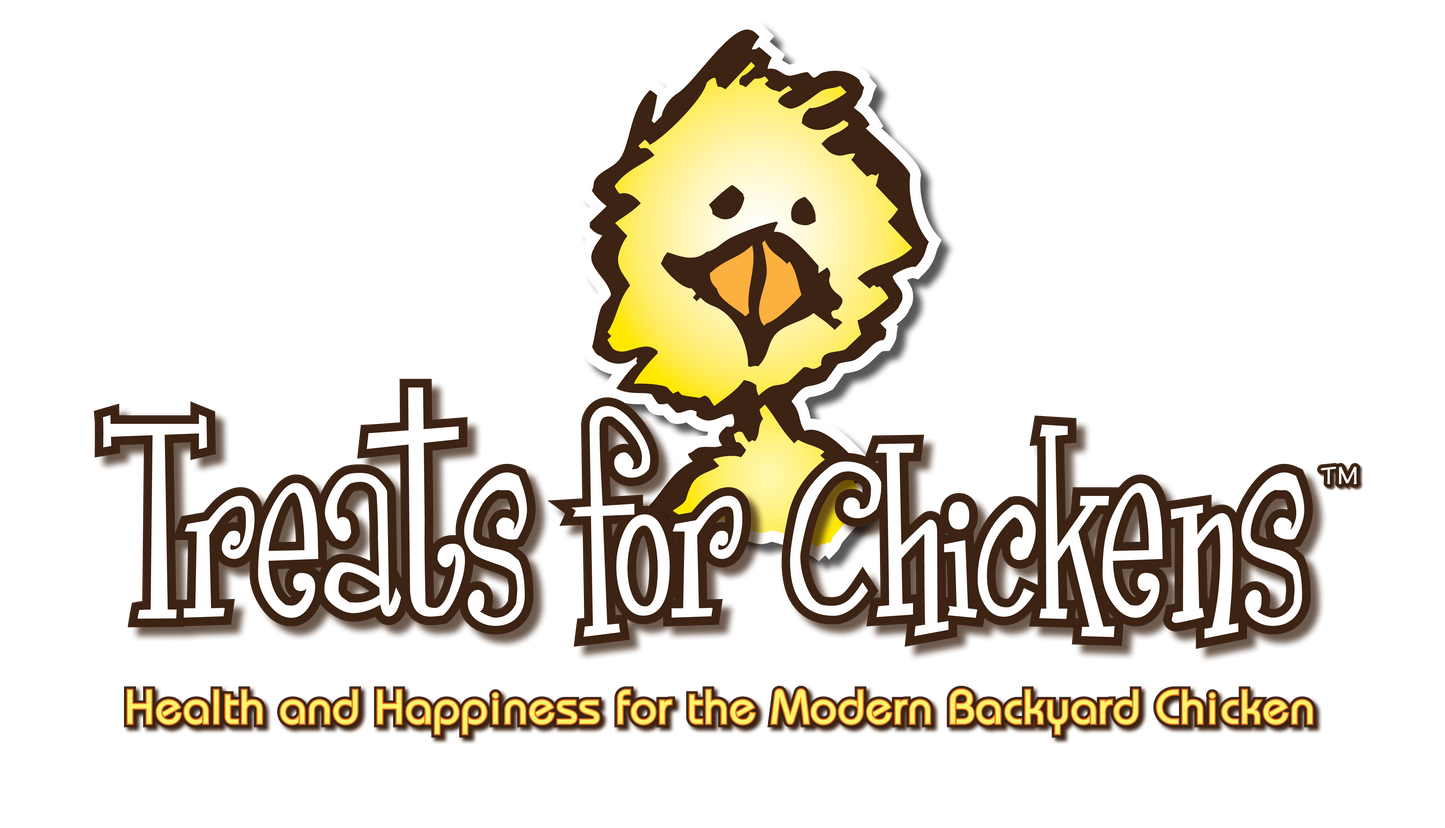

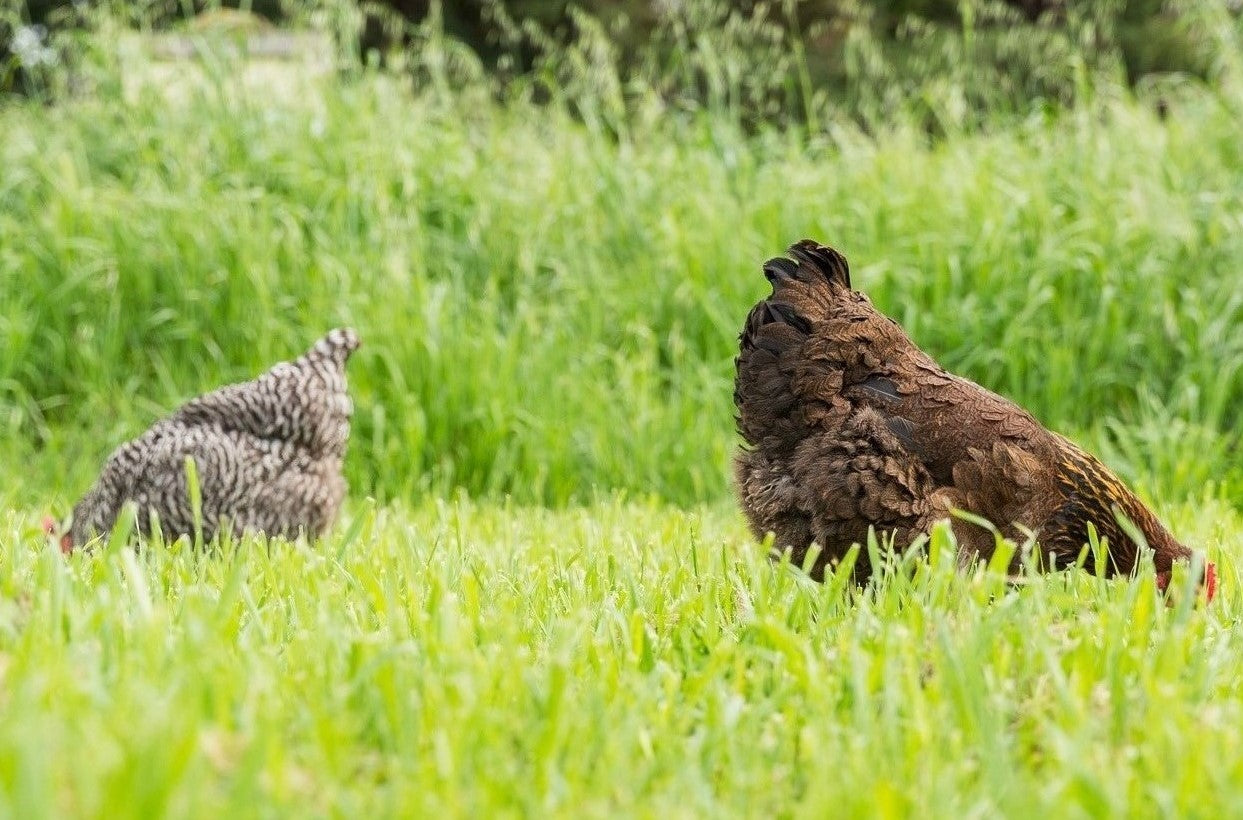
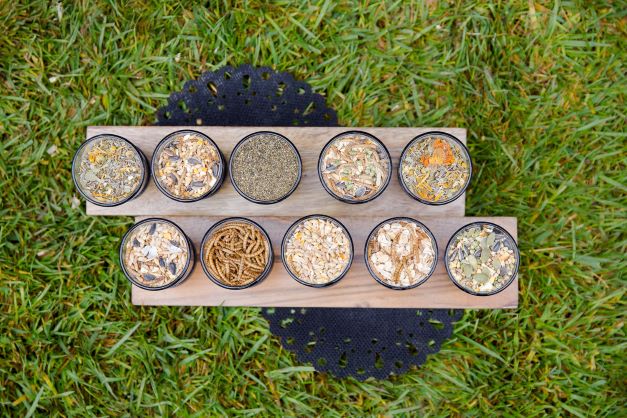
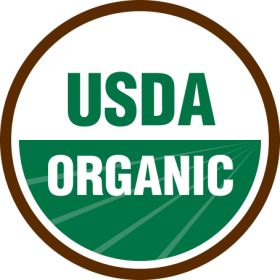
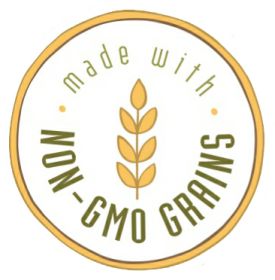


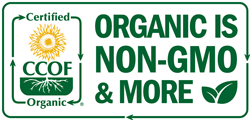
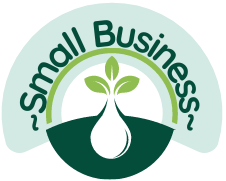

Trying to help my chickens